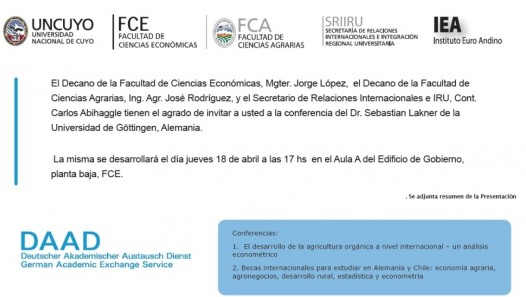Following Mendoza in the top five were Vicente López (Greater Buenos Aires),Ushuaia (Tierra del Fuego), San Isidro (Greater Buenos Aires), and LagoArgentino (Santa Cruz).
The study correlated 23 different variables including environmental problems(landfills, noise), natural leisure facilities (outdoor spaces, water> spots), and social and cultural recreational facilities (cultural and sportscentres). It also compared environmental, educational, housing, and healthfactors.
Velázquez went on to say that the quality of life on the whole has improveddramatically in Argentina over the last decade: “The transformationsexperienced by Argentina during the first decade of the 21st century showundoubtable achievements regarding the living conditions of the population,although there are some contradictions between different regions.”
At the bottom of the ranking was Ramón Lista in Formosa, where just 1.28% ofthe inhabitants are university graduates, 42.87% lack a toilet, and theinfant mortality rate is 20.08 per 1,000.
Penultimate was Figueroa in Santiago del Estero, where 65% of the populationlive in shacks, 66% still cook with wood they have gathered, and 40% lack arefrigerator. Additionally, 90% of the population don’t have access torunning water or a toilet, despite the fact that the district saw the> inauguration of reservoir ‘Néstor Kirchner’ in 2011, reconstruction of whichcost more than $700m.
The three other districts in the bottom five were also in Argentina’s north- including Formosa’s Matacos and Bermejo, and Salta’s Rivadavia - showingthe sharp disparity between the country’s south/centre and north.
Fuente: Diario Los Andes
Mendoza, première ville argentine pour la meilleure qualité de vie
Mendoza est la ville qui offre la meilleure qualité de vie en Argentine, selon une étude publiée par le Conseil de Recherche Scientifique et Technique (Conicet) qui a classé la qualité de vie dans 528 localités de notre pays.
« À Mendoza, le pourcentage de gradués universitaires est vraiment haut [22.85%,record national], la population qui n’a pas de toilettes est très réduite [0.94%], et le taux de mortalité infantile est bas [9.16 sur 1,000], » a expliqué Guillermo Velázquez, le coordinateur de recherche. L’accessibilité des établissements récréatifs et l’important nombre de parcs et d’espaces extérieurs dans la ville contribuent aussi à positionner Mendoza à la première place du classement.
Après Mendoza, les premières places sont occupées par Vicente López (Grand Buenos Aires), Ushuaia (Tierra del Fuego), San Isidro (Grand Buenos Aires), et Lago Argentino (Santa Cruz).
L’étude mets en corrélation 23 variables différentes, dont les problèmes environnementaux (décharge, bruit), les infrastructures récréatives naturelles (espaces extérieurs, sports), et les installations de loisirs sociaux et culturel (centres culturels, sportifs). Elle compare aussi des facteurs environnementaux, éducationnels, sanitaires et de logement.
Velázquez a précisé que la qualité de vie en Argentine s’est améliorée considérablement pendant la dernière décennie : « Les transformations expérimentées par Argentine pendant la première décennie du 21e siècle montrent des progrès indéniables si l’on observe les conditions de vie de la population. Même s’il y a quelques contradictions entre les différentes régions. »
Nach
eine Untersuchung des Nationales Kommission für wissenschaftlichen und
technischen Forschung (Conicet), ist Mendoza die Satdt mit der besten
Lebensqualität Argentiniens.
“Eine grosse Prozent der Bevölkerung Mendozas hat Hochschulbildung (22.85%). Bemerkenswert ist dass, zu wenig Leute keine WC haben. Es gibt auch eine niedrige Säuglingsterblichkeit (9.16 pro 1.000)”, erzählte Guillermo Velázquez (Forschungskoordinator).
Nach Mendoza kommen die argentinischen Städten:
Vicente López (Gross Buenos Aires), Ushuaia (Tierra del Fuego), San Isidro
(Gross Buenos Aires), und Lago Argentino (Santa Cruz).
Die Untersuchung berücksichtig 23 verschiedene Kriterien, beispielweise: Umweltprobleme (Sanitärprobleme, Lärm, Verschmutzung); Naturfreizeiteinrichtungen (Aussenanlagen, Wasseraktivitäten); soziale und kulturelle Freizeiteinrichtungen (Kultur-und Sport
Zentren). Umwelt, Bildung, Wohnen und Gesundheit Faktoren wurden auch verglichen.
Velázquez
sagte dass, in den letzten zehn Jahren der Lebensqualität allgemein verbessert
hat. “Die Entwicklung, die Argentinien in der ersten Dekade des 21.
Jahrhunderts erfahren hat, hat unzweifelhafte Erfolge im Rahmen Lebensqualität
der Bevölkerung. Es gibt aber noch Ungleichheiten zwischen den verschidene
argentinische Regionen.
Am letzten Platz der Rangfolge steht Formosa, wo 1.28% der Bevölkerung
Hochshulbildung haben, 42.87% kein WC haben, und Säuglingsterblichkeit
is 20.08 pro 1.000.
Die vorletzte Stadt ist Figueroa (Santiago del Estero), wo 65% der Bevölkerung keinen Zugang zu
fließendes
Wasser oder eine Toilette haben, trotz der Tatsache dass, das Provinz die
Wiedereröffnung des Reservoirs “Nestor Kirchner” (2011)sah. Die Wiederaufbau des Reservoirs kostete US$ 700
millionen.
Die andere drei Städten, die in den letzten Plätze stehen, liegen auch im Norden (Matacos und Bermejo in Formosa, und Rivadavia in Salta). Das zeigt die Ungleichheit zwischen Süden, Zentrum und Norden.


